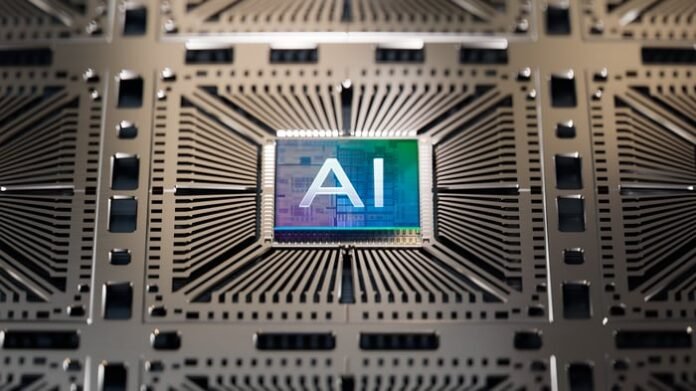With the Nasdaq Composite and S&P 500 indexes coming into correction territory, it has opened up quite a lot of good shopping for alternatives for traders, together with within the semiconductor area. This consists of the shares of the 2 main corporations within the synthetic intelligence (AI) chip area: Nvidia (NVDA -1.50%) and Broadcom (AVGO -0.49%).
As of this writing, each shares are down a bit greater than 20% from their latest highs. Let’s study why these two AI chip shares appear like no-brainer buys at these ranges.
Nvidia
Nvidia is the undisputed champion of AI chips with its graphics processing models (GPUs). Whereas initially designed to assist pace up the graphics rendering in video video games, as we speak GPUs are used for a wide range of duties. Nevertheless, an important of those makes use of, at the very least by way of income, are to coach giant language fashions (LLMs) and run inference for AI.
GPUs have turn out to be a key a part of AI infrastructure as a consequence of their parallel processing capability and excessive reminiscence bandwidth, which collectively permit giant quantities of knowledge to be processed shortly. Nvidia will not be the one firm that designs GPUs, with Superior Micro Gadgets, and to a lesser extent Intel, additionally making these chips. Nevertheless, Nvidia has a dominant market share of over 80% within the GPU area as a outcomes of its CUDA software program platform.
Nvidia created CUDA again in 2006 to permit builders to program its chips for duties past their authentic goal in an effort to broaden the marketplace for GPUs. Using GPUs in different areas was sluggish to develop and AMD didn’t introduce a aggressive software program providing till about 10 years later. In the meantime, builders realized to program GPUs on Nvidia’s platform, whereas the corporate had a decade-long lead in enhancing its platform. With the arrival of AI, Nvidia was capable of construct a group of GPU-accelerated libraries and instruments designed particularly for AI on high of the CUDA platform with CUDA-X. This has created the extensive moat the corporate sees as we speak.
As such, so long as AI infrastructure spending continues to be robust, Nvidia stays very properly positioned, as its GPUs stay the principle chips used to coach AI fashions and run inference. AI infrastructure stays strong, as cloud computing corporations construct out information facilities to maintain up with rising demand and a lot of tech corporations rush to create higher AI fashions. At the moment, the chief method to enhance AI fashions is thru brute computing energy energy, which implies utilizing increasingly more AI chips.
The latest market sell-off leaves the inventory attractively valued. It trades at a ahead price-to-earnings (P/E) ratio of 27 occasions 2025 analyst estimates and a value/earnings-to-growth (PEG) ratio of about 0.5, with PEG ratios under 1 typically seen as the edge for a inventory being thought-about undervalued.
Broadcom
Broadcom participates within the AI infrastructure market in two primary methods. The primary is thru its networking expertise portfolio by way of which it provides switches, community interface playing cards (NICs), and different elements. Switches are a necessary a part of AI infrastructure as they permit information to be transferred between GPUs and servers whereas serving to handle the stream of knowledge to keep away from community congestion. NICs, in the meantime, permit computer systems to speak with one another, permitting AI workloads to be distributed throughout a number of servers.
Broadcom is a frontrunner in ethernet switching expertise, the place it competes with different ethernet switching corporations in addition to with Nvidia’s InfiniBand switching expertise. As AI clusters turn out to be larger, there’s a want for extra high-bandwidth, low latency ethernet switches, which is benefiting Broadcom.
The opposite space wherein Broadcom is concerned within the AI infrastructure buildout is by serving to prospects develop customized chips, generally known as application-specific built-in circuits (ASICs), for AI. These customized chips are designed for very particular duties, and as such they will outperform mass-market GPUs whereas additionally having decrease energy consumption. The draw back is that these customized chips provide much less flexibility, whereas the fee and time to develop them is far higher.

Picture supply: Getty Photos.
The corporate’s first customized AI chip buyer was Alphabet, the place it helped the cloud computing firm develop its Trillium sixth-generation tensor processing unit (TPU). It took about 15 months for the chip to be designed and deployed inside Google Cloud’s information facilities, which was thought-about fast. Since then, Broadcom continued so as to add further AI chip prospects, bringing its whole to seven.
Amongst its three AI chip prospects which are the furthest alongside of their growth, Broadcom sees a serviceable tackle market of between $60 billion and $90 billion in its fiscal yr 2027 (ending October 2027) as they give the impression of being to broaden to 1 million AI chip clusters. For context, Broadcom ended final quarter at a few $16 billion AI income run fee (that is quarterly income that’s annualized).
Whereas Nvidia will seize its justifiable share of this market as properly, this can be a enormous alternative for Broadcom. In the meantime, it ought to see continued AI development as its new AI chips transfer into manufacturing in later years.
The sell-off has dropped Broadcom’s valuation to a ahead P/E ratio of simply over 29, which can show to be cheap if it might seize a lot of the AI alternative in entrance of it.
Suzanne Frey, an government at Alphabet, is a member of The Motley Idiot’s board of administrators. Geoffrey Seiler has positions in Alphabet. The Motley Idiot has positions in and recommends Superior Micro Gadgets, Alphabet, Intel, and Nvidia. The Motley Idiot recommends Broadcom and recommends the next choices: brief Might 2025 $30 calls on Intel. The Motley Idiot has a disclosure coverage.

